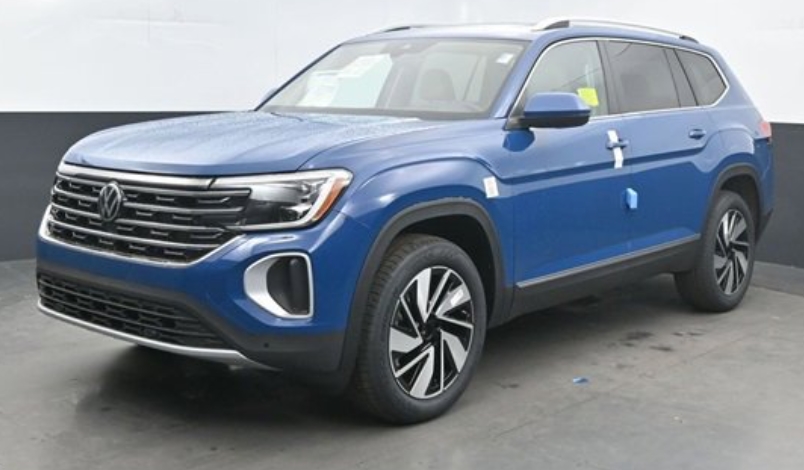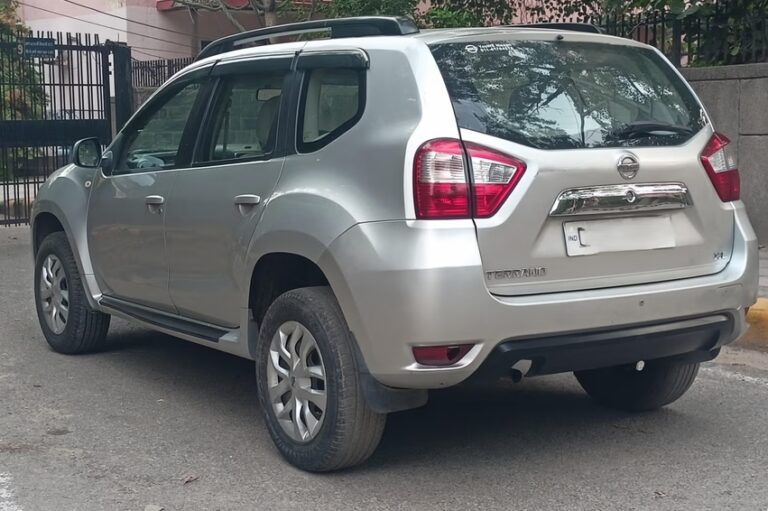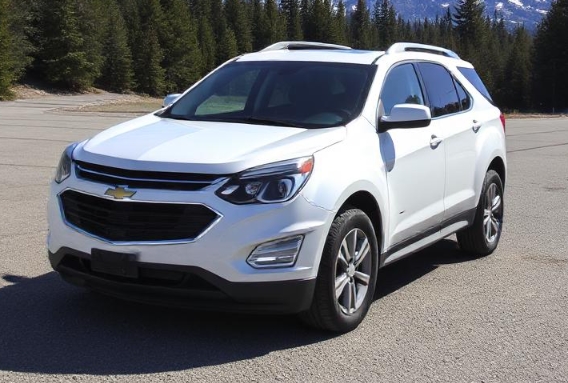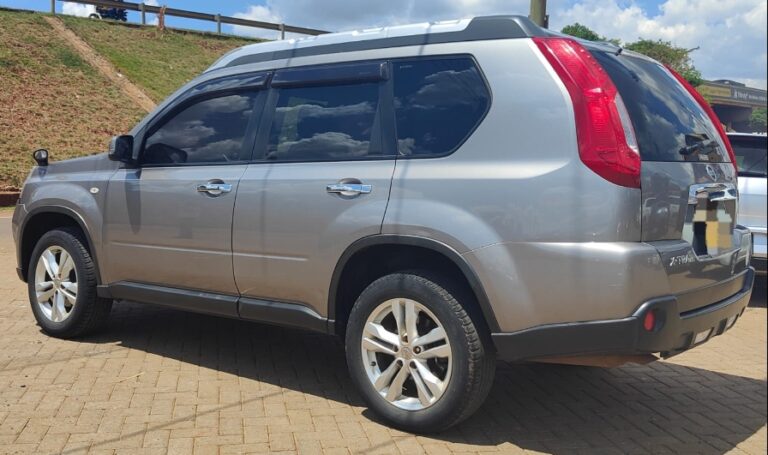The Evolution of the Volkswagen Atlas
The Volkswagen Atlas represents a significant chapter in Volkswagen’s North American lineup, marking its entry into the highly competitive midsize SUV segment. Since its debut, the Atlas has evolved through various updates and trims, reflecting changing consumer preferences, technological advancements, and Volkswagen’s strategic ambitions. This comprehensive article traces the Atlas’s development from its inception to the present, detailing production years, model variants, trim levels, and key features.
Introduction to the Volkswagen Atlas
Launched in 2017, the Volkswagen Atlas was introduced primarily for the North American market, where the midsize SUV segment was rapidly growing. The Atlas was designed to appeal to families seeking a spacious, comfortable, and reliable vehicle, with an emphasis on versatility and modern technology.
Built at Volkswagen’s Chattanooga Assembly Plant in Tennessee, the Atlas signified Volkswagen’s commitment to the U.S. market, offering a vehicle tailored to American tastes with a focus on interior space, safety, and value.
First Generation (2018–2023)
2018 Model Year: The Introduction of the Atlas
- Production Start: 2017 (model year 2018)
- Market Launch: Early 2017, with models arriving in dealerships in the summer of 2017
- Design & Platform: Built on the Volkswagen Group MQB platform, the Atlas features a bold design with a wide stance, emphasizing a commanding road presence.
Key Features:
- Standard three-row seating accommodating up to seven passengers
- Engines: 2.0-liter turbocharged inline-4 (EPA-estimated 20/24 mpg city/highway), and a 3.6-liter VR6 engine (EPA-estimated 17/23 mpg)
- Transmission: 8-speed automatic
- Drive configurations: Front-wheel drive (FWD) standard, with available all-wheel drive (AWD)
Trim Levels (2018–2023)
Volkswagen initially offered the Atlas with several trim levels, providing a range of features and options:
- S: Base trim with essential features, cloth upholstery, 18-inch wheels, and basic infotainment
- SE: Adds upgraded interior features, 18-inch or optional 20-inch wheels, and additional safety tech
- SE with Technology: Includes advanced driver assistance, navigation, and upgraded audio
- SEL: Adds leather upholstery, larger wheels, panoramic sunroof, and premium audio
- SEL Premium: Top-tier trim with ventilated seats, adaptive cruise, advanced safety, and premium amenities
Mid-Cycle Refresh (2021 Model Year)
While the Atlas maintained its core design, a mid-cycle refresh arrived for 2021, featuring:
- Slight exterior updates, including new LED lighting signatures
- Interior upgrades with a new digital instrument cluster (Digital Cockpit)
- Introduction of standard safety features like Blind Spot Monitor and Rear Cross Traffic Alert across more trims
- Infotainment system upgrades, including larger touchscreens and smartphone integration (Apple CarPlay and Android Auto)
Special Editions and Packages
Throughout its first generation, Volkswagen introduced various packages and editions, such as:
- Launch Edition: Limited early production units with unique badging
- Black Edition: Featuring blacked-out trim elements and wheels
- R-Line Package: Sportier styling cues, including R-Line badging and exterior accents
Second Generation (2024–Present)
Announcement and Development
Volkswagen officially announced the second-generation Atlas in late 2022, with production commencing in 2023 for the 2024 model year. The new Atlas is built on an evolved MQB platform, emphasizing improved technology, safety, and efficiency.
2024 Model Year: The New Atlas
- Design: More refined, with sleeker lines, a broader grille, and modern LED lighting
- Powertrain Options:
- Turbocharged 2.0-liter four-cylinder (standard)
- Optional 3.6-liter VR6 engine (returning on higher trims)
- Hybrid variants announced but not yet released as of 2023
- Interior & Technology:
- Larger digital displays, including a standard digital instrument cluster
- Larger infotainment screens with wireless Apple CarPlay and Android Auto
- Enhanced driver-assistance features, including semi-autonomous driving capabilities in higher trims
- Chassis & Comfort:
- Improved ride quality and noise insulation
- Increased cargo capacity
- More premium interior materials
Trim Levels and Variants Over the Years
First Generation (2018–2023)
The initial Atlas was available in multiple trims, with offerings expanding over the years:
- S: Entry-level, cloth seats, basic infotainment
- SE: Adds safety and comfort features
- SE with Technology: Navigation, larger screens
- SEL: Leather, sunroof, premium audio
- SEL Premium: Ventilated seats, advanced safety features
Special packages and editions added further customization, with some trims receiving unique styling elements like the R-Line.
Second Generation (2024–Present)
The 2024 Atlas introduces a simplified but more feature-rich lineup, typically including:
- SE: Base trim with standard safety, tech, and comfort features
- SEL: Adds upgraded interior materials, larger screens, and advanced driver assistance
- SEL Premium R-Line: Sportier styling, larger wheels, premium features
- Highline or Limited (expected): Top-tier trims with the most features, though specific names may vary by market
Evolution in Features and Technology
Over its lifespan, the Atlas has seen consistent upgrades in safety and convenience:
- Safety: Introduction of standard driver-assist features like Blind Spot Monitoring, Rear Cross Traffic Alert, Adaptive Cruise Control, and Lane Keep Assist.
- Infotainment: Progression from basic touchscreen systems to large, high-resolution displays with wireless connectivity.
- Comfort: Upgraded seats, climate control, and sound insulation for a more refined ride.
- Performance: Enhanced engines and transmission systems for better efficiency and driving dynamics.
.
RepairSurge Online Repair Manuals Replace Bulky Books With Reliable Digital Information!
Faster And Cheaper Than Traditional Printed Manuals, Users Get Instant Access To The Repair Information They Need For Any Car, Truck, Van or SUV:
.
Notable Milestones and Market Impact
The Atlas’s evolution reflects Volkswagen’s strategic focus on North America, emphasizing size, comfort, and safety. Its success has helped VW establish a strong foothold in the midsize SUV segment, competing with models like the Honda Pilot, Toyota Highlander, and Ford Explorer.
The introduction of the second-generation Atlas signals Volkswagen’s commitment to innovation, with a focus on electrification, advanced driver-assistance systems, and premium features aligning with global automotive trends.
Conclusion
The Volkswagen Atlas has evolved significantly since its debut in 2017, transitioning from a bold newcomer in the midsize SUV market to a sophisticated, technology-rich vehicle with a global outlook. Its range of trims and features has expanded to cater to diverse customer preferences, emphasizing safety, comfort, and style.
As Volkswagen continues to develop the Atlas, especially with the upcoming hybrid and electric variants, it is poised to remain a key player in the competitive midsize SUV segment. The Atlas’s journey reflects Volkswagen’s broader transformation toward innovation and customer-centric design, ensuring its relevance well into the future.







